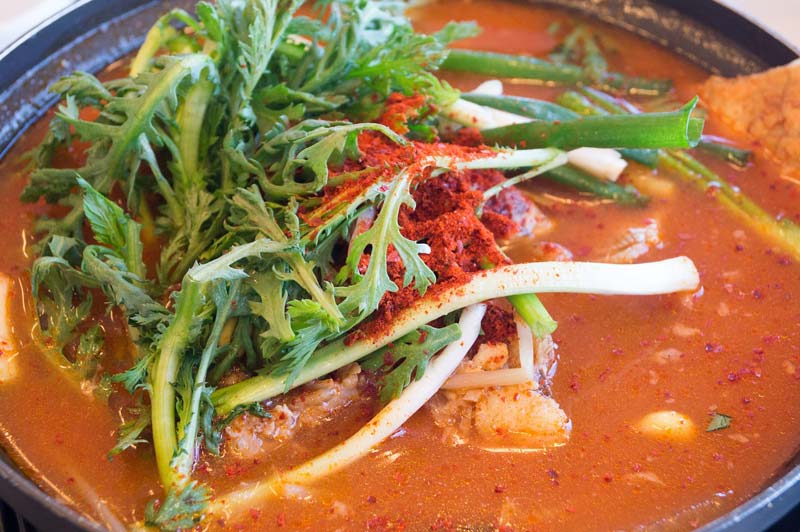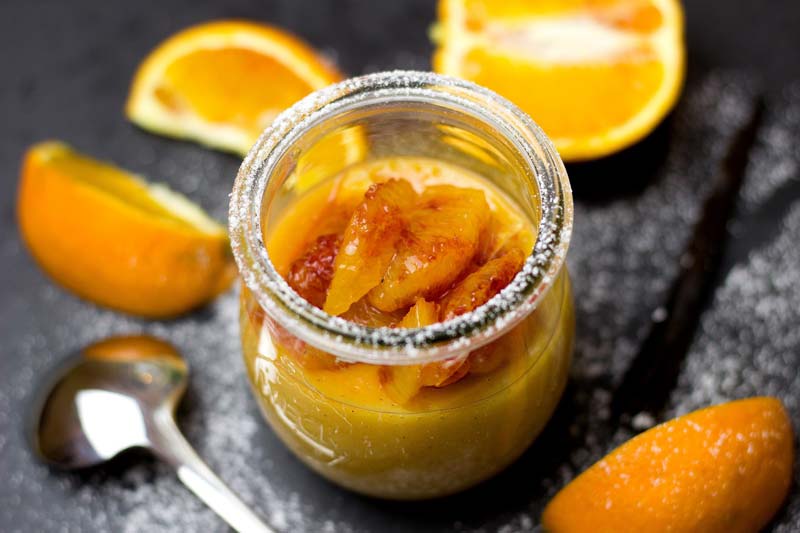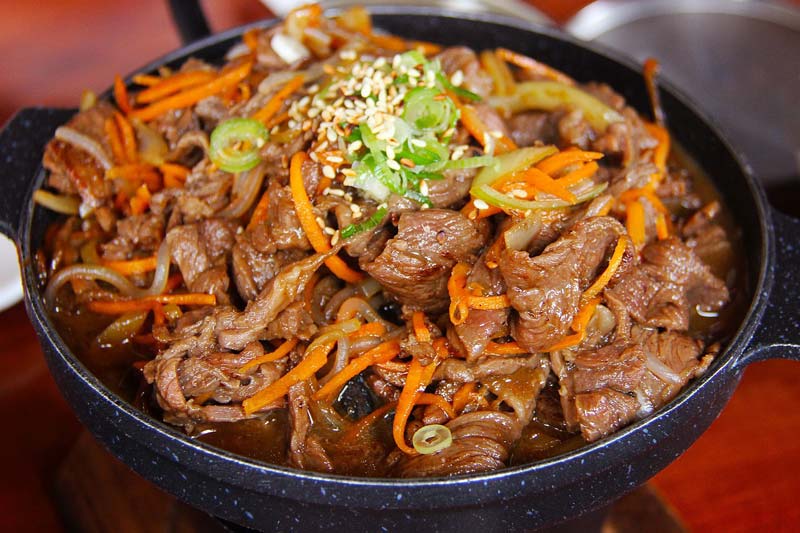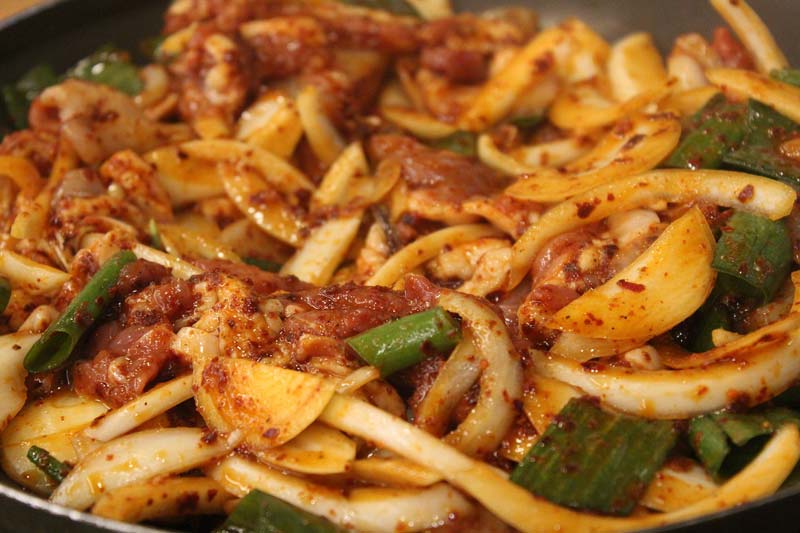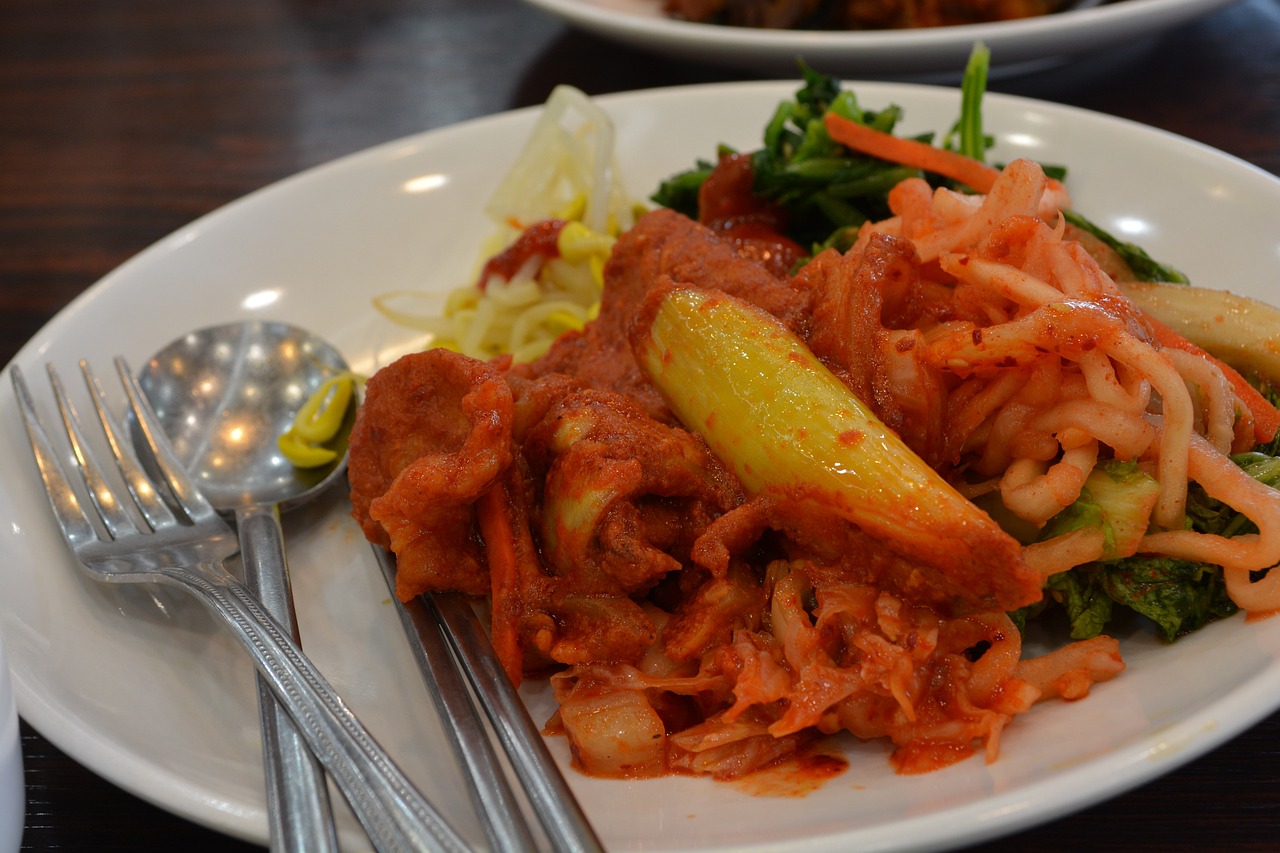Kimchi is a fermented food that mixes pickled Korean cabbage or radish with spicy vegetables and various condiments such as salted fish and red pepper powder.
The term ‘kimchi’ was derived from ‘chimchae’ which means soaking vegetables in salty water and storing them. To be prepared for the coldest season of Korea – 3 or 4 months in winter – when food was scarce, vegetables were pickled and stored beforehand, which was later developed into kimchi. Kimchi is not a simple fermented vegetable but a complex and indigenous food of Korea involving diverse condiments and spices.
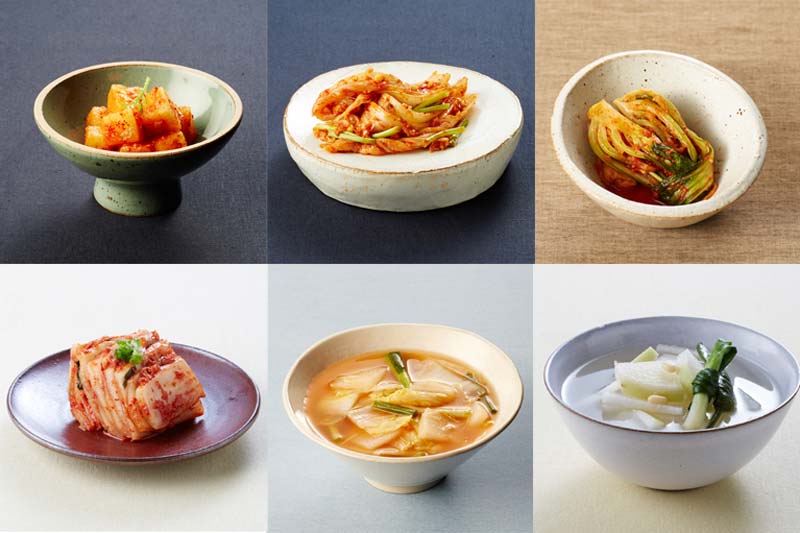
Various Kimchi, fot. 국립국어원 / wikipedia
Origin
In view that Koreans had enjoyed eating vegetables from the ancient times, and that salt had been made and used then, together with the old records on appearance of fermented foods like salted fish and soy in Korea, it is presumed that kimchi had existed before the three-kingdom era. Red pepper was introduced into Korea via Japan around 1592-1598 when the Japanese army invaded Korea.
The first detailed description on kimchi is found in the book ‘Gyeongdo Japji’ (written in the late 1700s) which records that radish, cabbage, garlic, hot pepper powder, turban shell, ear shell, yellow corvina, etc. were mixed into boiled soup of salted shrimps, and then stored in jars during winter season for being fermented and transformed into a hot food.
The book also records that Korean people in 1700s enjoyed the fermented food. Another record is found in ‘Jeungbo Sanrim Gyeongje’ (mountains and forest economy) written in 1766, which describes the use of kimchi as daily side dish.
The type of kimchi we see today seems to have appeared after the 17th century when the ‘cabbage with head’ was introduced from China. Around this time, condiments and spices were also in full use in Korea, which enabled kimchi to develop into the current version.
(korfood/korfood1_1.jsp)

